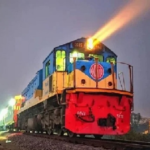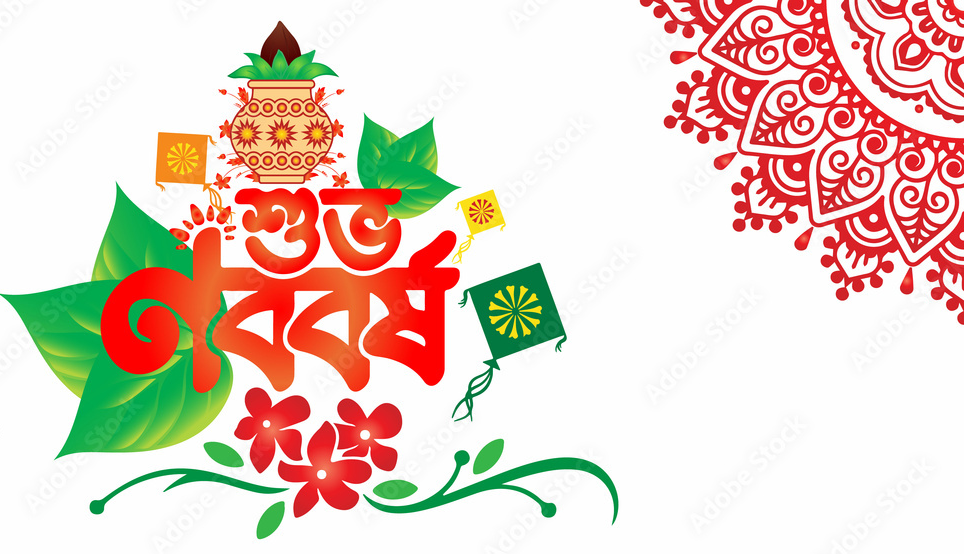Pohela Boishakh, also known as Bengali New Year or Bangla Noboborsho, is a colorful and festive celebration that marks the beginning of the Bengali calendar year. It is celebrated on April 14th every year in Bangladesh, as well as in the Indian states of West Bengal, Assam, and Tripura, among other regions with Bengali-speaking populations.
Pohela Boishakh is a time of joy and jubilation, as people welcome the new year with enthusiasm, cultural events, and traditional rituals. The festival has deep cultural and historical significance, as it represents the rich heritage and traditions of the Bengali community.
The celebration of Pohela Boishakh is marked by various customs and traditions. One of the most prominent features of the festival is the colorful processions known as “Mongol Shobhajatra,” where people from all walks of life participate, wearing traditional attire and carrying colorful banners and placards. The Mongol Shobhajatra is a symbolic representation of the hopes and aspirations for a prosperous and peaceful new year.
Another significant aspect of Pohela Boishakh is the traditional cultural performances that take place in various parts of Bangladesh and Bengali-speaking regions. These performances include folk songs, dance, music, and theatrical performances, showcasing the rich cultural heritage of Bengal. Many cultural organizations and educational institutions also organize special events, cultural programs, and fairs to celebrate the occasion.
One of the distinctive features of Pohela Boishakh is the traditional Bengali attire worn during the festival. Men typically wear kurta or panjabi (a traditional tunic), and women wear sarees or salwar kameez (a traditional two-piece outfit). These traditional attires are often brightly colored, reflecting the festive spirit of the occasion.
Food also plays an important role in the celebration of Pohela Boishakh. Traditional Bengali dishes, such as panta bhat (fermented rice), ilish macher paturi (hilsa fish wrapped in banana leaf), doi (yogurt), and various types of sweets, are popular during the festival. Families and friends come together to share festive meals and exchange wishes for the new year.
Pohela Boishakh is not only a time for celebration and merriment but also holds cultural and historical significance. It is considered a time to pay homage to Bengali culture, heritage, and traditions. The festival promotes a sense of community, unity, and inclusivity among the Bengali-speaking population, both in Bangladesh and in other regions where Bengali culture is prevalent.
In recent times, Pohela Boishakh has also gained significance as a platform for expressing social and cultural issues, promoting artistic endeavors, and fostering a sense of national pride. The festival has become a melting pot of cultural performances, art, crafts, and culinary delights, attracting tourists and visitors from around the world.
In conclusion, Pohela Boishakh is a vibrant and joyous festival that celebrates the beginning of the Bengali New Year and promotes the rich cultural heritage of Bengal. The festival is marked by colorful processions, traditional cultural performances, festive attire, delicious food, and a sense of community and inclusivity. Pohela Boishakh is not only a time for celebration but also holds cultural, historical, and social significance, making it an important festival for the Bengali-speaking community and beyond.
Mongol Shobhajatra
Mongol Shobhajatra is a colorful and vibrant procession that takes place during the festival of Pohela Boishakh, also known as Bangla Noboborsho, which is the Bengali New Year celebrated in Bangladesh and other parts of the Indian subcontinent. Mongol Shobhajatra is considered one of the iconic cultural events of the festival, representing joy, unity, and hope for the upcoming year.
The tradition of Mongol Shobhajatra dates back to 1989 when the students and teachers of Dhaka University’s Faculty of Fine Arts organized the first procession as a way to protest against the oppressive rule of the military government in Bangladesh at that time. It was meant to be a peaceful and creative expression of the Bengali spirit and a way to promote the rich cultural heritage of Bengal.
Since then, Mongol Shobhajatra has become an integral part of Pohela Boishakh celebrations, and the procession has grown in scale and popularity over the years. It is now organized in various parts of Bangladesh, involving people from all walks of life, including students, teachers, artists, musicians, and the general public.
The highlight of Mongol Shobhajatra is the colorful and creative floats that are paraded during the procession. These floats, also known as “Shobhajatra,” are designed with intricate artwork, depicting various themes such as cultural heritage, social issues, and national pride. The floats are often made using traditional materials, such as bamboo, cloth, and paint, and are adorned with colorful banners, placards, and decorations.
The participants of Mongol Shobhajatra dress in traditional Bengali attire, adding to the vibrancy of the procession. Men often wear kurta or panjabi, while women adorn sarees or salwar kameez, and children wear colorful outfits. The participants also carry banners and placards with messages of goodwill, hope, and social awareness, promoting unity, diversity, and inclusivity.
Mongol Shobhajatra is not just a visual spectacle, but it also holds deep cultural and social significance. It represents the spirit of the Bengali community, reflecting their creativity, resilience, and unity in the face of challenges. It promotes the values of inclusivity, diversity, and social awareness, advocating for a just and harmonious society.
In 2016, UNESCO recognized Mongol Shobhajatra as an Intangible Cultural Heritage of Humanity, acknowledging its cultural and social significance. The recognition has further amplified the importance of Mongol Shobhajatra as a unique cultural event that represents the cultural identity and heritage of Bengal to the world.
In conclusion, Mongol Shobhajatra is a colorful and vibrant procession that takes place during the festival of Pohela Boishakh, symbolizing joy, unity, and hope for the Bengali New Year. It is a creative expression of the Bengali spirit, promoting cultural heritage, social awareness, and national pride. Mongol Shobhajatra is not just a visual spectacle, but it holds deeper cultural and social significance, representing the resilience, creativity, and unity of the Bengali community.









